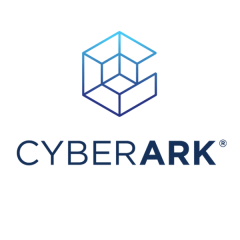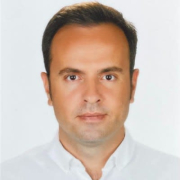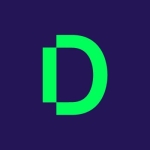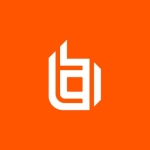What is our primary use case?
We're in the process of rolling it out. We haven't finished our rollout yet. Most of my co-workers have been doing a lot of hands-on, and I haven't been the one with the most hands-on.
We're not in production yet. We're still in tests, but it will give us the ability to manage the privileged accounts. It'll make that a lot easier. One of the things that we've been having trouble with is that we haven't been changing the passwords on our service accounts, for instance, for a long time, because it is so difficult to do. That was one of the main reasons we started down this road. We decided we would also expand out into managing things like the local administrator accounts on our laptops, etc. We've started there with local administrator accounts because it is an easier thing to tackle, rather than doing the service accounts and all of that. We're going to start there, and then we'll move into service accounts, and then we're going to move into administrative accounts that are human-owned rather than service accounts. At this point, we're still dealing with the things related to local administrators.
I'm pretty sure we are using its latest version. In terms of deployment, we're split between an on-prem and public cloud setup.
What is most valuable?
We like it for the ability to automatically change passwords. At least for my group, that's the best thing.
What needs improvement?
It should be easier to install. It is a comprehensive product, which makes it difficult to install. You need to have their consulting services in order to get it all installed and set up correctly because there is so much going on. It would be nice if there were an easier way to do the installation without professional services. I suspect they get a fair amount of their money from professional services. So, there is not a huge incentive.
It would be nice to do personal password management so that we could roll something out to the entire organization to manage people's passwords. At the moment, we're rolling out LastPass to do that, at least to some groups. I'm not sure if everybody in the organization is going to get it because most people only have a couple of accounts that we're concerned about. We're using LastPass because it is significantly less money than the CyberArk solution. CyberArk has one, but it is rather expensive. The LastPass solution is integrated into browsers. So, you can use it in your browser. I don't remember if I had to install a client on my machine or not. I probably just installed a browser extension. So, I'm not sure how that'll work with some of the other things. There must be a client that I didn't get around to because that's also in the very beginning currently. They have sent me links to training on how to use it and set it up, but I haven't had time to take the training yet.
For how long have I used the solution?
It has been a little over six months.
What do I think about the stability of the solution?
It seems to be doing everything it is supposed to, and we haven't had any serious issues. The few issues we have had were pretty quickly resolved.
What do I think about the scalability of the solution?
It certainly appears to be scalable. Because we're still in the rollout stage, we don't know for sure, but it doesn't look like there will be an issue with scaling.
Its usage is limited to under 50 people. There are 12 people in my group. SSA has another 8, and the service desk has probably 20. Then, the Information Security Office probably has another 15 or so. Overall, we're under 50. We're only looking at privileged accounts and not everything.
How are customer service and support?
I haven't used them myself, but I've been in the loop. The person driving the project at this point is somebody from the Information Security Office, but he has been keeping everybody else in the deployment team in the loop about what's going on. So far, the support seems to have been pretty good. When he reaches out to them, they seem to be able to resolve the issue pretty quickly.
Which solution did I use previously and why did I switch?
We weren't using anything before.
How was the initial setup?
It is difficult to install. You need to have their consulting services to get it installed and set up correctly.
What's my experience with pricing, setup cost, and licensing?
I haven't seen the numbers. I know it is not cheap, but I don't know what it is. I would rate it a six out of ten in terms of pricing. It is definitely more expensive than the other product, but it also provides more functionality, and it is modular too. So, we pay for the functionality we're actually going to use, and that's nice.
Which other solutions did I evaluate?
We looked really hard at another option, but I can't remember their name. We almost went with them until we got the ISO involved, and they said, "We like CyberArk better because they're more flexible. They do more, even though it is going to be a little bit harder to manage." So, we reassessed and decided on CyberArk instead of the other solution. We had looked at a third one, but the third one wasn't close to CyberArk and the other one we evaluated. They just didn't have the breadth of capability of doing all the things we were looking for.
We did a real quick proof of concept of the other software, and then it changed names, which is why I can't remember it. We've been working on this for about three years now. We couldn't get traction with management to do anything. The thing that really got management interested was when ISO said, "We really need to do something here." Then management decided that they were willing to spend some money, but we did a really quick proof of concept with the other product. We installed it on a server, on-prem, and we did a quick run-through on some test servers that were immediately erased right after we finished the PoC, and it worked really well. It was also really easy to install, but it didn't have the flexibility to do all of the things that CyberArk is doing for us or will be doing for us in the end.
What other advice do I have?
Before you get started, make sure that you know what it is that you're looking for from the product. That's one of the things that we went through. We had all of the groups involved, which included the Information Security Office, my team with the servers and the networks, and people who were managing the accounts. We all got together and submitted scenarios for what we wanted out of the product, and then we went to CyberArk and asked them how they were going to meet these needs, and they were able to meet pretty much every need. There were only one or two minor things that they couldn't manage, and those weren't that important. So, we were willing to go with it. I don't know if the other company was able to meet those either. My advice would be to make sure what it is that you want first before you go talk to them because they have a huge list of things that they can do for you, and you don't want to buy the things you don't need.
I would rate it an eight out of ten in terms of flexibility in everything because it does almost everything. The biggest drawback is because of the complexity, it is hard to manage. It is not impossible by any means, but it is not the simplest thing to manage. Cost-wise, it is not a cheap product, but it does a ton of things, and it does them well.
Disclosure: My company does not have a business relationship with this vendor other than being a customer.





















